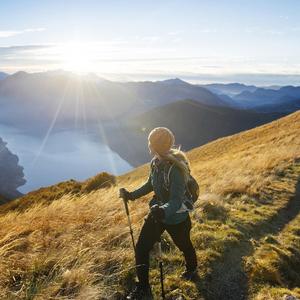
A new guide, printed at the beginning of 2024, for a concise description of the natural areas (and municipalities) of the Riviera di Ulisse regional park.

These pages accompany you to discover the treasures that our park has to offer. Every corner here speaks of wonder and history. Among rocky walls that challenge the sea, lush forests and imposing cliffs you will find traces of the past that tell of those who preceded us. There's also room for reflection, in ancient fortresses and a quiet sanctuary. Nature here expresses itself in all its forms: from the rich biodiversity, to the dwarf palms that sprout between the rocks, up to the sky, where, with a little luck, you might spot the peregrine falcon. And for sea lovers, our seabed hides priceless treasures. We give you our warmest welcome!
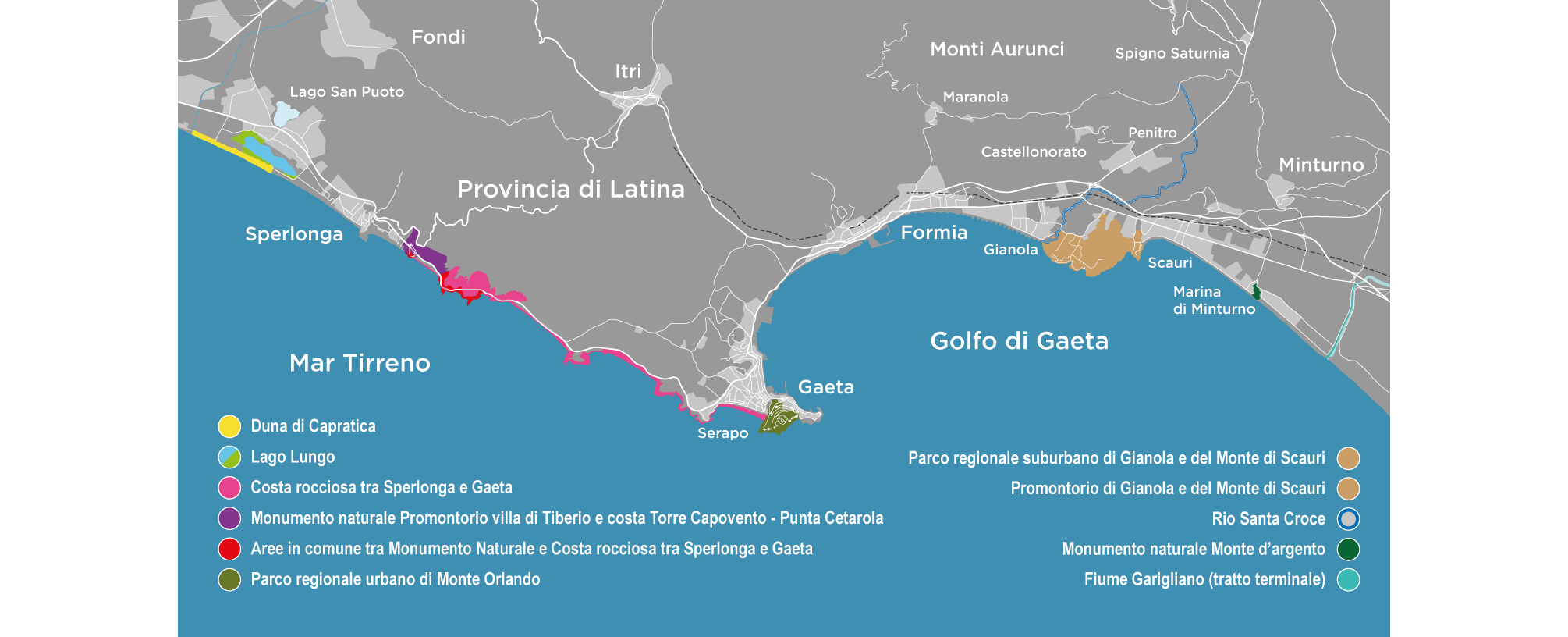
We are an instrumental autority of the Lazio Region established in 2003 to safeguard three protected areas of incredible naturalistic, archaeological and historical value: the suburban regional park of Gianola e del Monte di Scauri, the urban regional park of Monte Orlando and the evocative Promontorio Villa di Tiberio e costa Torre Capovento - Punta Cetarola natural monument. Since 2020, the Monte d'Argento natural monument has also been added. We also manage some protected areas, included in the Natura 2000 network, for the protection of habitats and species of significant importance at european level (six Special Areas of Conservation - ZSC - and two Special Protection Areas - ZPS), as well as over 100 hectares of marine areas (protected in agreement with the Port Authority) overlooking our natural areas. Our commitment? Protect these natural treasures, encourage sustainable development and spread environmental awareness among young people and adults.
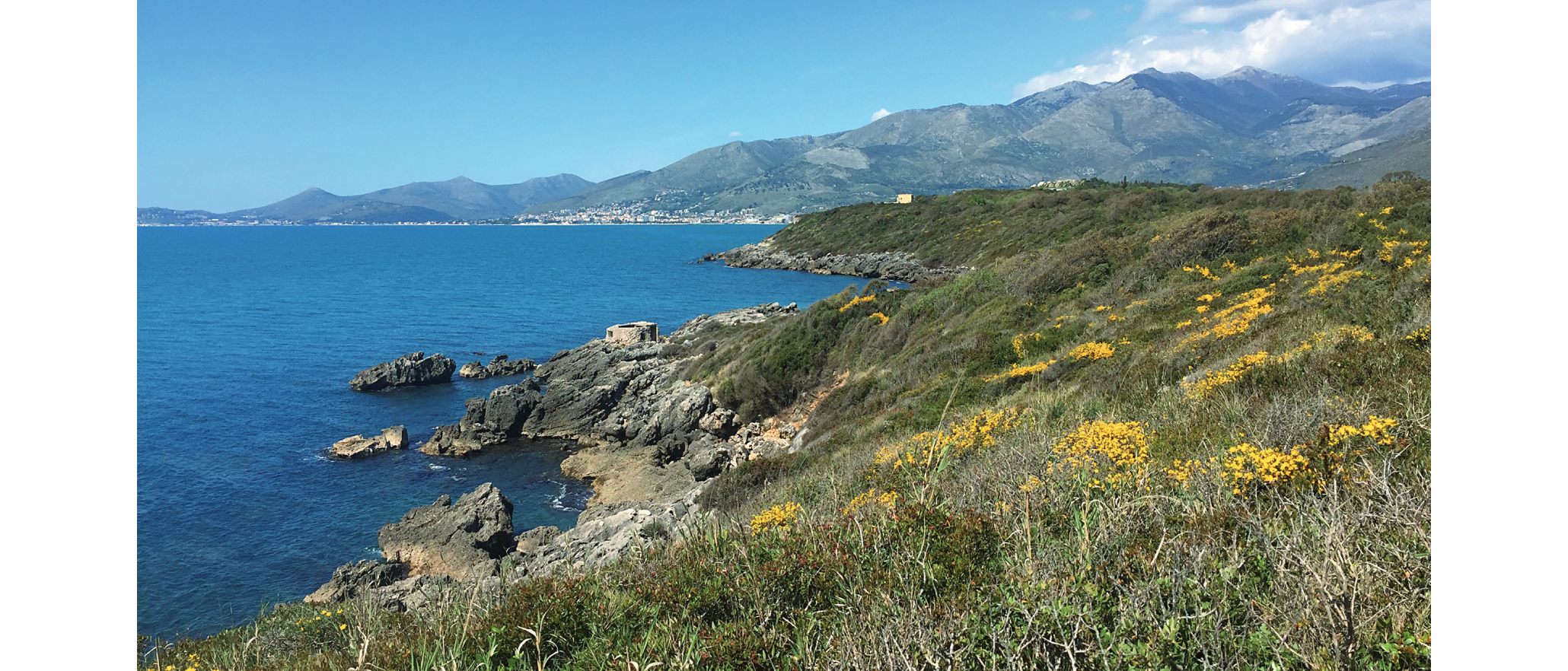
An enchanting corner of lower Lazio which extends over 292 hectares between the territories of Formia and Minturno. The mild Mediterranean climate invites pleasant visits at any time of the year. Here, the Mediterranean scrub, in some areas, transforms into magnificent woods, among which the evocative cork grove of Monte di Scauri stands out. The vegetation of the cliffs is an extraordinary example of adaptation to nature of plants used to living near the sea, defying strong winds and high salinity. Despite the strong surrounding anthropization, the fauna is rich and varied, with terrestrial mammals and numerous bird species that exploit the strategic position of the Gianola promontory on the migratory routes between Europe and Africa. The seabed, which alternates rocky and sandy stretches, is home to rich and diverse animal and plant populations. Gianola also represents an important archaeological site, with the remains of an extensive villa from the late Republican era, built around 50 BC. presumably by Mamurra, a knight friend of Julius Caesar, whose use continued into the late period with uses different from the initial one. A church, the sixteenth-century coastal watchtowers (among which the Scauri one is still well maintained) and the “Porticciolo di Gianola” (locally called “Porticciolo Romano”) date back to the Middle Ages, built in the 1930s on the remains of a fishpond of the aforementioned villa.
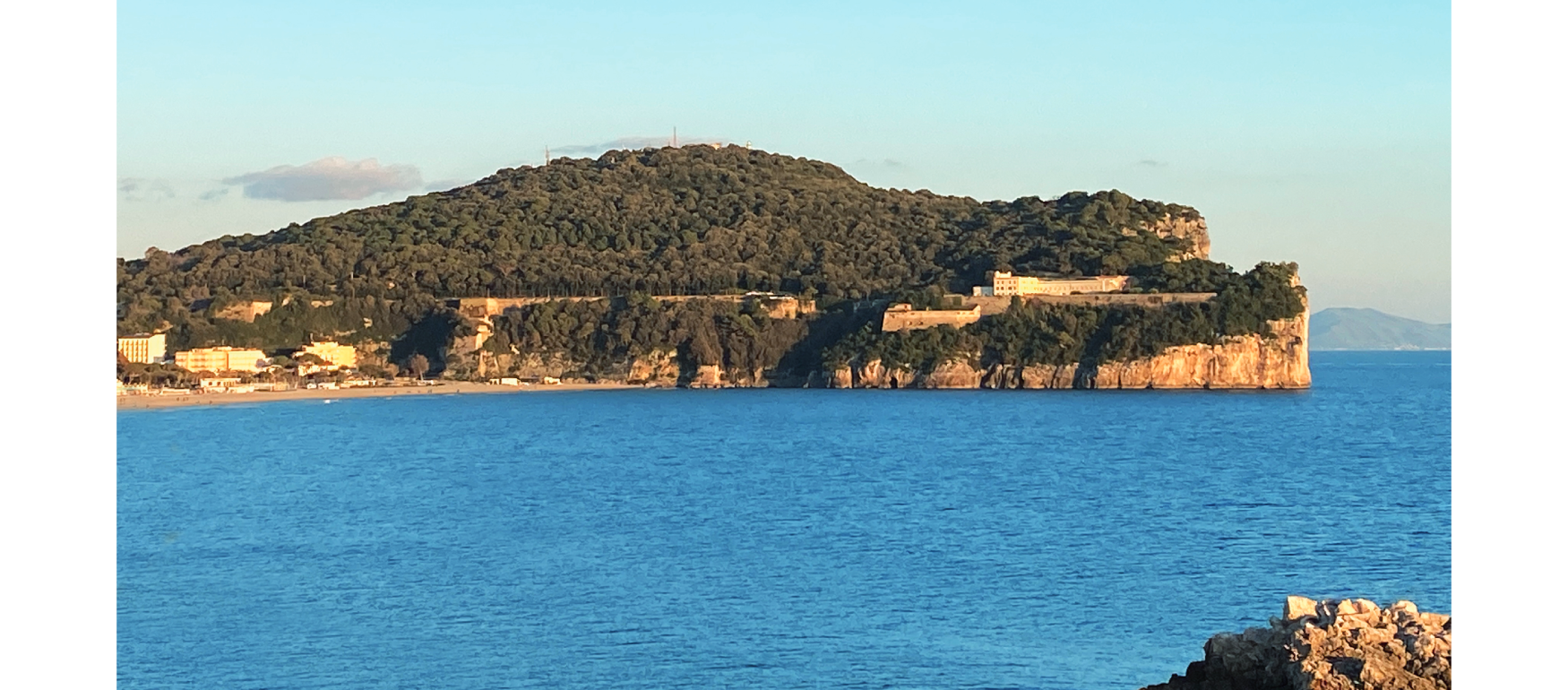
It juts out into the sea of the Gulf of Gaeta and represents the final stretch of the Aurunci mountains chain. Its imposing cliffs, shaped by time and natural agents, fall sheer into the sea creating a breathtaking panorama. Here, rainwater dissolving the calcium carbonate of the rocks has created unique erosive shapes. The vegetation varies from the garrigue to the holm oak forest, enriched by species such as the rare dwarf palm and the cliff hollyhock, while the fauna includes splendid birds of prey such as the peregrine falcon, nesting on the cliffs. Monte Orlando is also a site of great archaeological and historical interest. At the top of the hill we admire the mausoleum of Lucio Munazio Planco, one of the most impressive and best preserved examples of roman sepulchral art in the world. The strategic position has historically made Monte Orlando a natural fortress, refuge for popes and sovereigns, so today there remain military structures, built starting from the 16th century (and in particular during the Borbone domination), including powder magazines, batteries and casemates, some well preserved and a splendid example of military architecture. The park area is also home to the well-known and visited sanctuary of the Holy Trinity (dating back to the 11th century) where you can admire famous attractions such as the “Grotta del Turco”, the “Mano del Turco” and the spectacular fissure overlooking the sea known as "Montagna Spaccata".
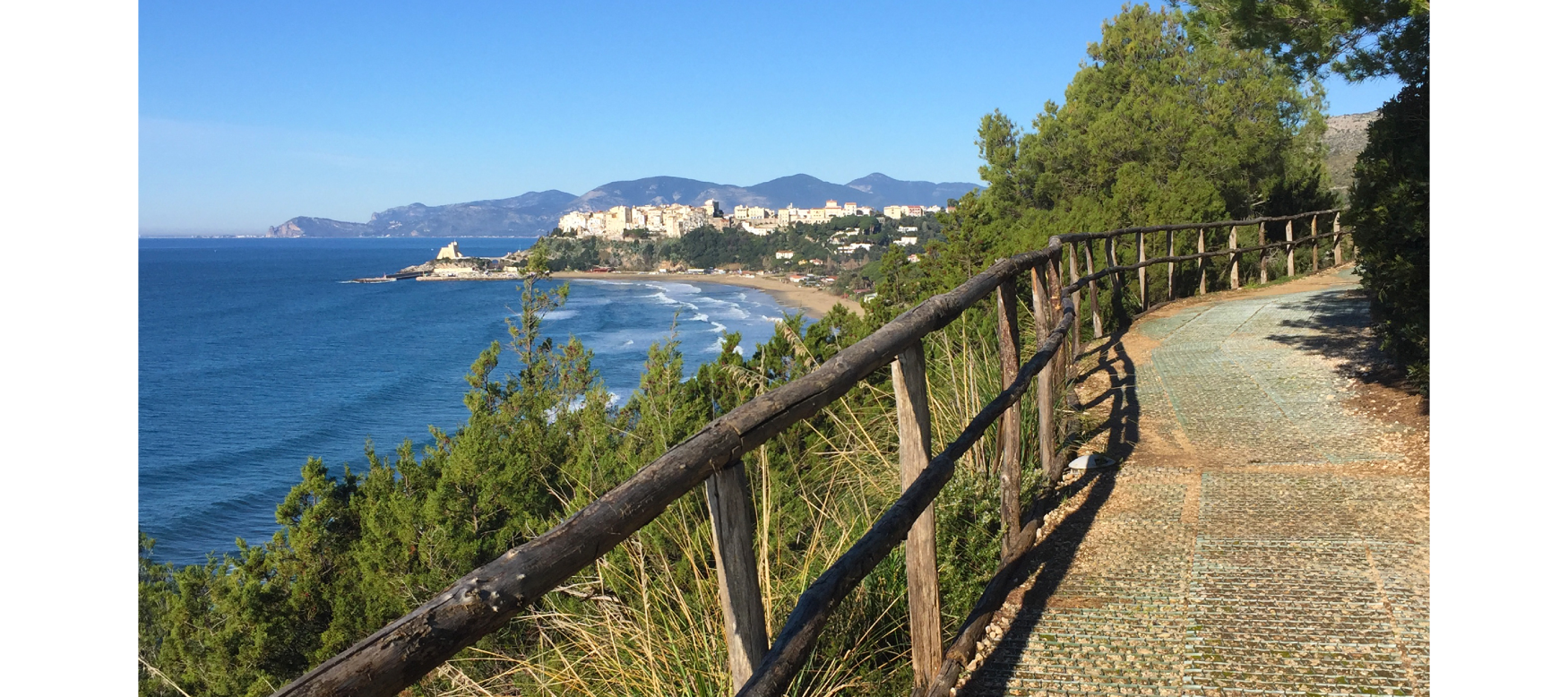
A natural area of great charm that extends discontinuously along the coast of the Sperlonga area, from Monte Ciannito to the border with the municipality of Itri. Characterized by three rocky promontories and spectacular cliffs, the area features the typical vegetation of the Mediterranean scrub, embellished by the presence of the dwarf palm, the only native palm in Europe. The most important faunal populations are made up of birds of prey, herring gulls and kingfishers, as well as mammals such as badgers and hedgehogs, which live in the hinterland. Important nesting sites for the peregrine falcon have also been found in this area. Sperlonga, like many other places on the southern Pontine coast, was a holiday destination for the Roman patriciate. The grandiose Villa of Emperor Tiberio, discovered in the 1950s during the construction of today's Via Flacca, gave rise to a museum of national importance which houses important archaeological finds, including imposing sculptures depicting the exploits of Ulysses. Finally, some small but fascinating coastal sea caves are worth mentioning.
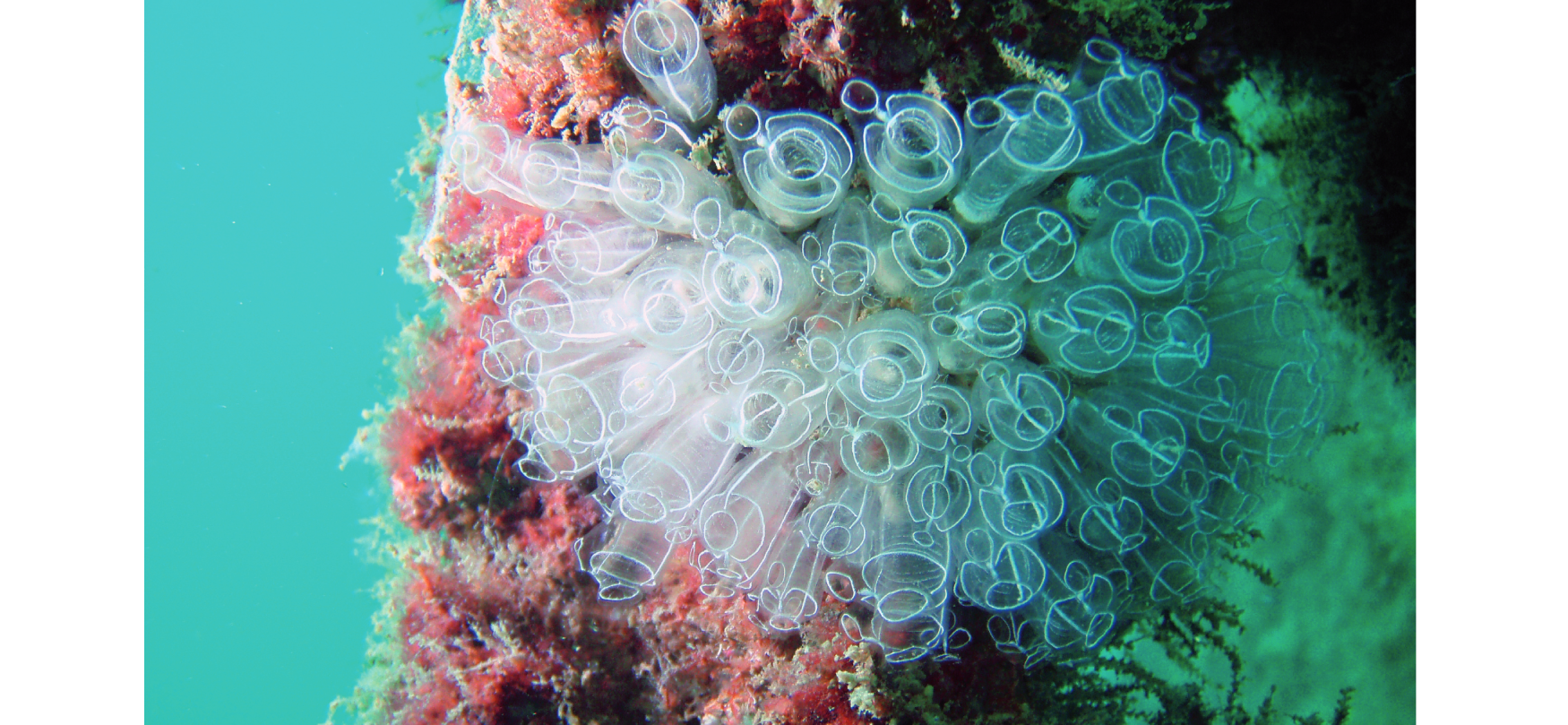
The Riviera di Ulisse regional park has been entrusted with some marine areas along the coasts of Gianola, Monte di Scauri, Monte Orlando and Sperlonga, where we carry out study and documentary activities and try to organize public activities aimed at environmental education and awareness-raising. Here we have said a big NO to fishing and motors to safeguard our friends who populate the sea. But there is so much more to discover! You can wear a mask, fins and snorkel to dive and admire up close the colors offered by the submerged vegetation as well as bream, grouper, octopus, lobster, sea bream and, if you are lucky, some elusive seahorse. Remember, however, to ask permission if you intend to use oxygen tanks. And what about the submerged caves near the cliffs of Monte Orlando, with their fascinating marine fauna and colorful flora? If you love exploration, you will find an underwater world full of surprises. And don't forget to explore the cliffs in front of the Gianola promontory, the inlet of Porto Cofaniello or the clear waters of Sperlonga. Finally, keep an eye on our website or our social channels: in the summer, sometimes, we organize some guided excursions to the sea, open to children, teenagers and adults.
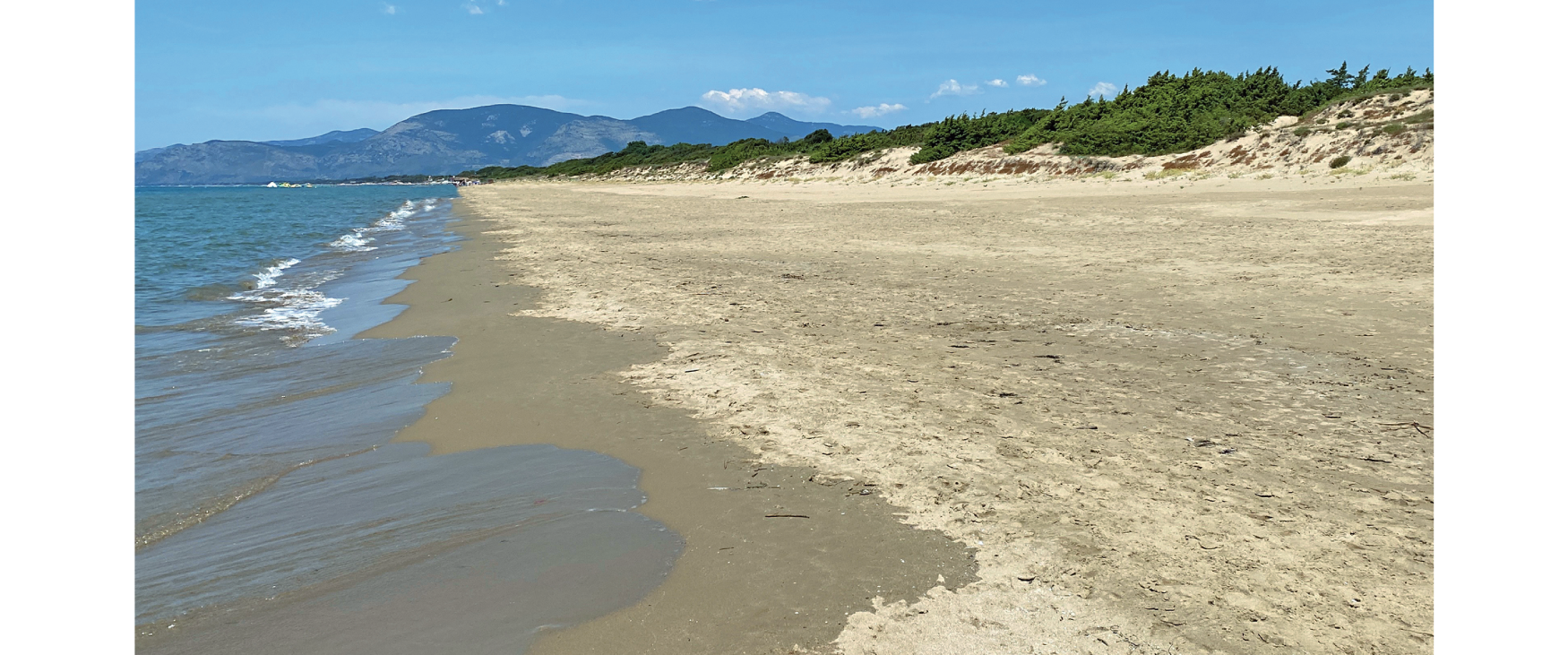
Natura 2000 is the main instrument of the European Union policy for the conservation of biodiversity. It is an ecological network spread across the entire territory of the Union, established to ensure the long-term maintenance of natural habitats and species of flora and fauna threatened or rare at Community level. The ultimate aim is to ensure the maintenance or restoration of the natural habitats and living conditions of the species in a satisfactory state of conservation and is pursued both through the application of specific directives, management guidelines, checks and monitoring, and through the study and the impact assessment, binding for projects and interventions to be carried out within or near these sites. The Special Protection Areas (ZPSs) and the Special Conservation Areas (ZSCs) entrusted to us by the Lazio Region are: Lago Lungo, Duna di Capratica, Costa Rocciosa tra Sperlonga e Gaeta, Rio Santa Croce, promontory of Gianola e Monte di Scauri and the final stretch of the Garigliano river. Among the most interesting species in our Natura 2000 sites we remember the nightjar, the kingfisher, the Corsican gull and the peregrine falcon. Our job? Conserve these areas by monitoring fauna, flora and proposing improved changes to conservation measures. In short, we are committed to keeping these special places healthy!
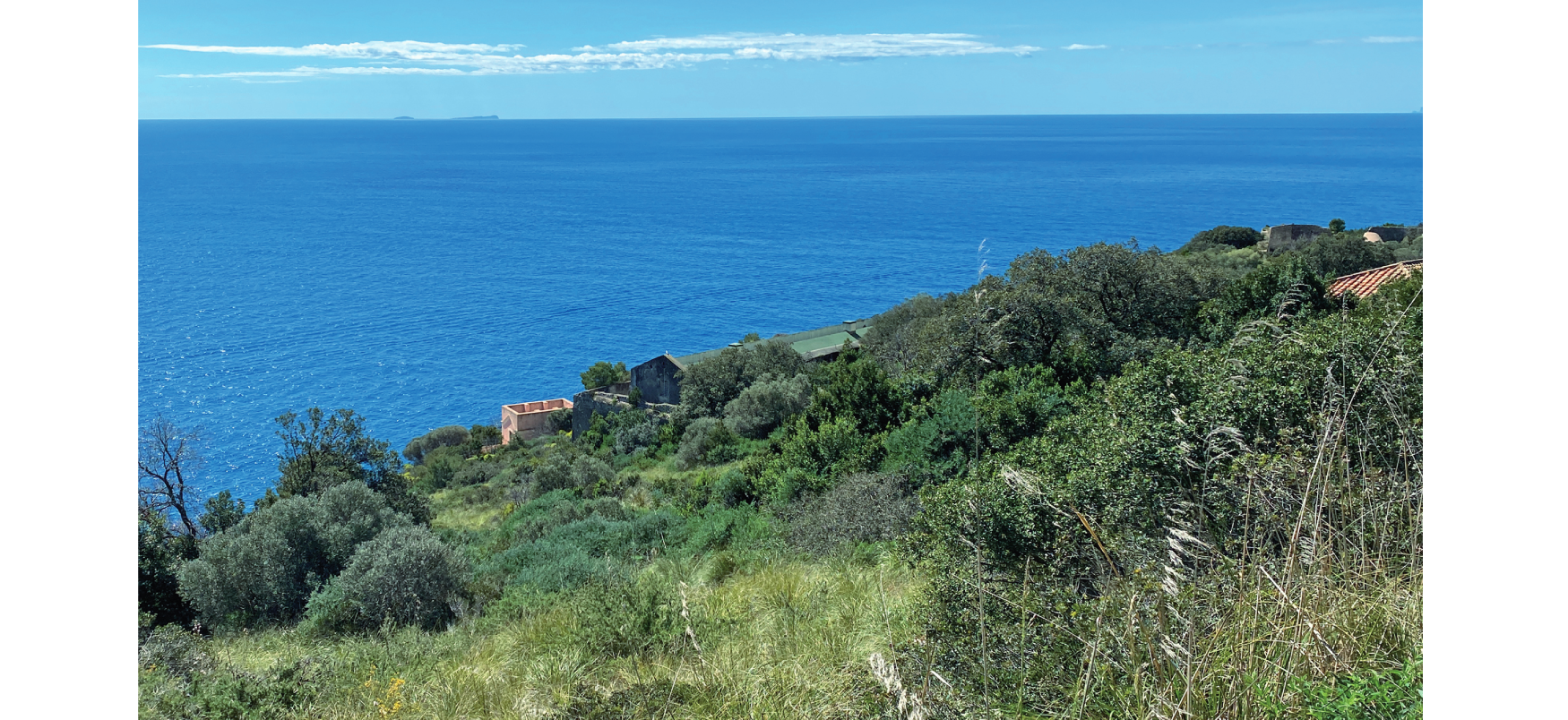
The natural environments of the Riviera di Ulisse regional park constitute a true Mediterranean mosaic, a jewel of biodiversity. In addition to the typical specimens of the low Mediterranean scrub such as myrtle, mastic tree, cistus, broom, heather, asparagine, and strawberry tree, we find lush forests of holm oak and cork oak. Also not to be overlooked are the sparser but precious specimens of downy oaks, carobs and poplars. We can also boast of preserving specimens of dwarf palm, the only native one in Europe, and the rare cliff hollyhock. The Aleppo pine, which decorates the hills or grows clinging to the cliffs overlooking the sea, represents another important tree species, so much so that we keep the seeds of these specimens in a germplasm bank to ensure the conservation of the species over time. In the garrigue, characterized by poor substrates, strong sunlight and drought, ampelodesma (locally called "stramma" and still used by straw craftsmen) and the aromatic rosemary are common. Not to be overlooked are the showy blooms of asphodel (commonly known as "Mazza di San Giuseppe"), cyclamens and irises and a series of fascinating spontaneous orchids.
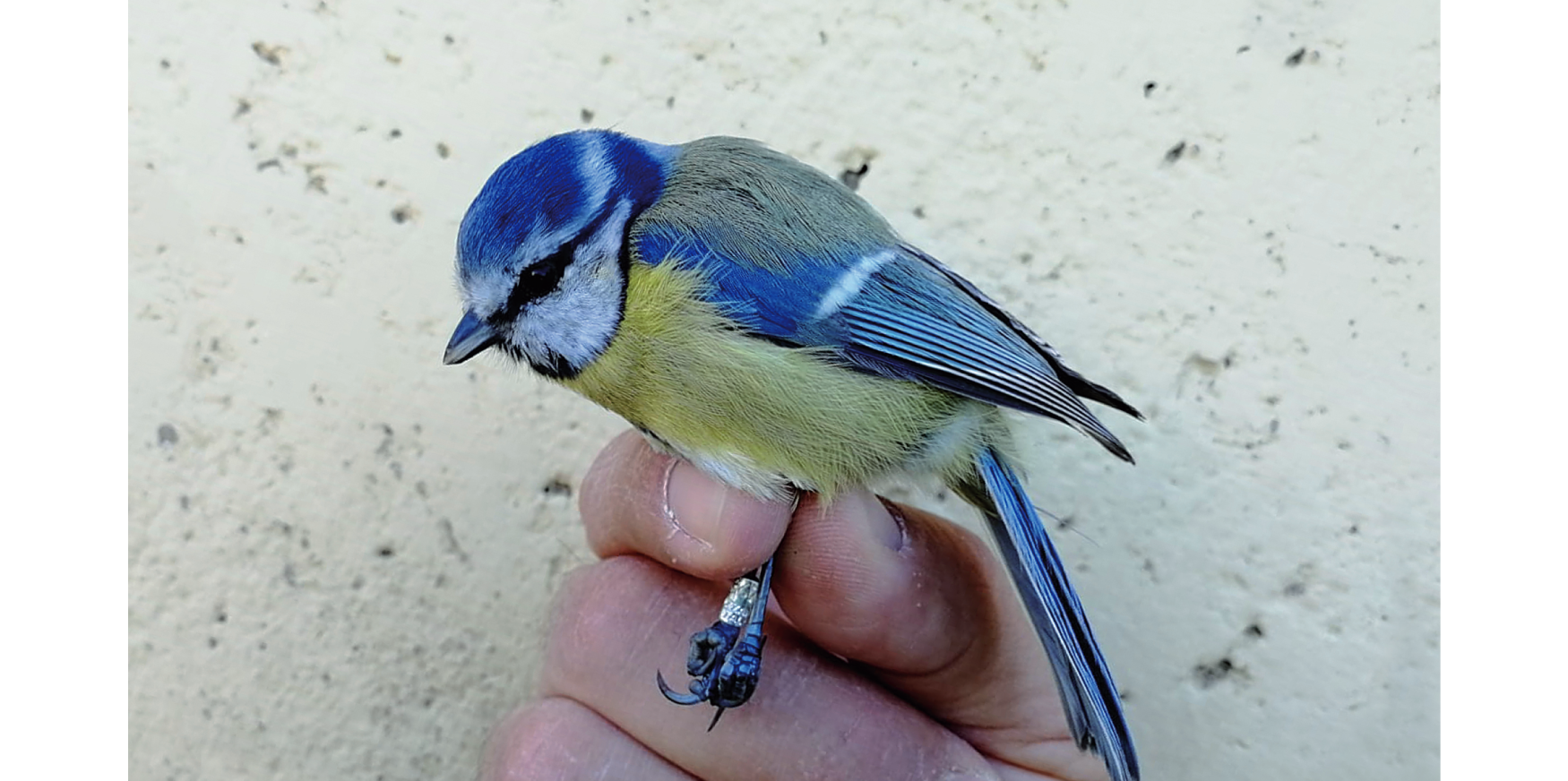
In the Riviera di Ulisse park the fauna reflects the rich diversity of the Mediterranean ecosystem. Among the mammals we remember the porcupine, the fox, the badger and the stone marten. The avifauna, sedentary or migratory, is more abundant, the most prized exponent of which is the peregrine falcon. Among the birds, the kestrel and nocturnal birds of prey such as the owl and the barn owl should not be forgotten. The cliffs and rocks close to the sea are home to notable populations of black-headed and herring gulls, as well as herons and cormorants, which are however present to a lesser extent. Since 2009, a small but important colony of Corsican gulls began nesting on our cliffs and since then our naturalists have been studying their dynamics and behaviour. During migration we will observe a large number of species: from common swallows to the beautiful hoopoe. Also important for biodiversity are the populations of insects and some freshwater fish such as mocrostigma trout, river lamprey and crayfish. There is also a good number of butterfly species. Finally, worth mentioning is the minor fauna which includes reptiles such as lizards, lush snakes and small snakes such as the rat snake and the black snake. Among the amphibians, the common toad and the tree frog stand out.

The Riviera di Ulisse regional park contains some of the most fascinating archaeological evidence of lower Lazio. In Roman times, the main road axis of lower Lazio was the Via Appia (with its secondary branches), to which the Via Flacca was added, of which some powerful bases are still visible today on the coast. The Villa di Tiberio in Sperlonga, discovered in 1957, consists of an outdoor environment in which the servants' rooms with the famous "Grotta di Tiberio" are still visible and a museum building which houses numerous minor finds and imposing sculptural groups linked to the myth of Ulysses. In Monte Orlando stands the majestic mausoleum of the consul Lucio Munazio Planco, which was part of his much larger residence, of which, however, only a few scattered testimonies remain. In Gianola, the Villa di Mamurra reveals the very advanced level of Roman engineering reached with its multi-level structure that slopes down towards the cliffs and which were connected to each other by ramps dug into the rock, of which the one called "Grotta della Janara" is visible. Other important rooms of the ancient villa are two cisterns for collecting spring water and the so-called “Edificio Ottagonale”, recently recovered and made publicly visitable.
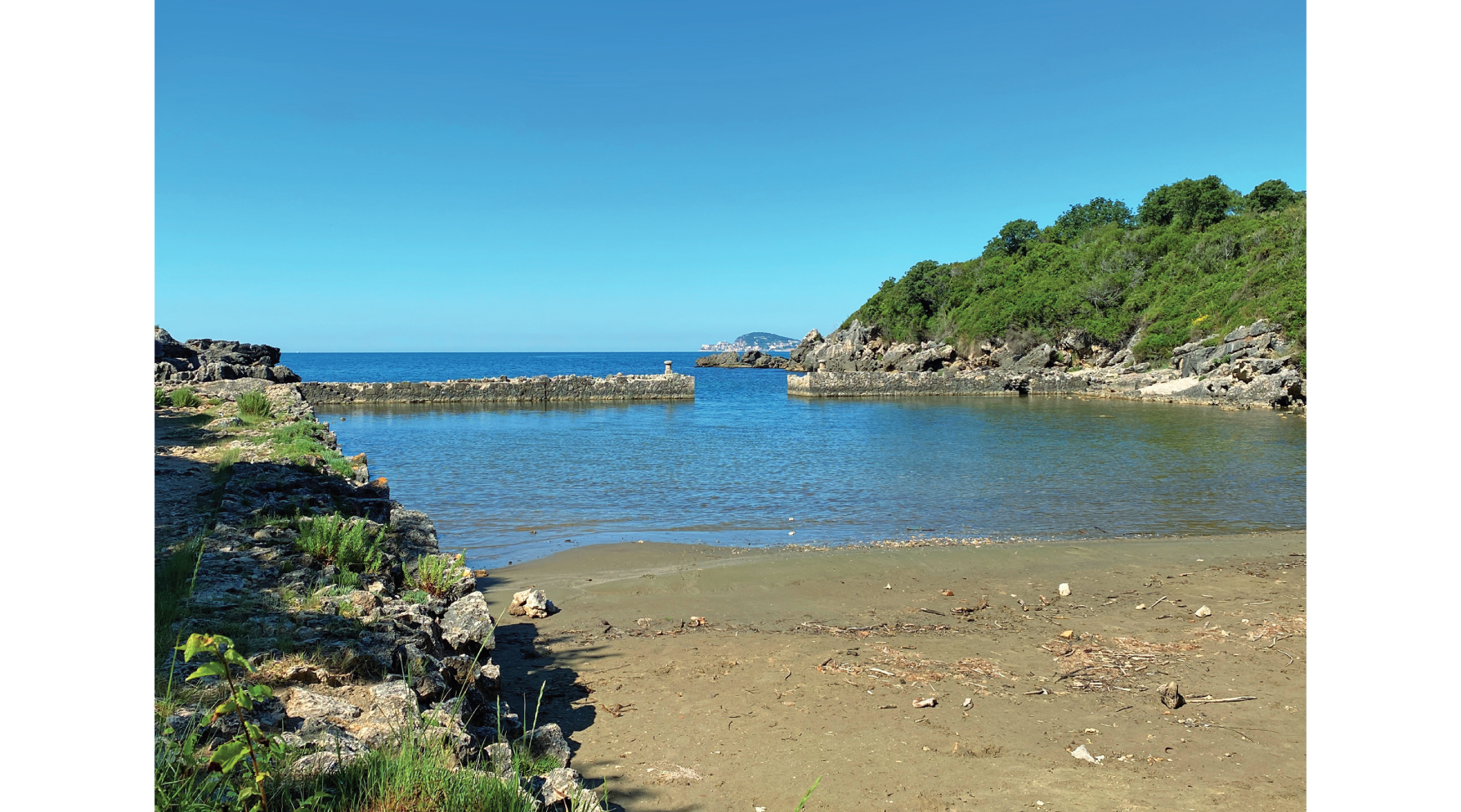
The history of the Tyrrhenian coast of southern Pontine, on which the natural areas of the Riviera di Ulisse regional park stand, is a journey through millennia of human activism. This rich heritage is a fascinating window into the past that invites visitors to explore and discover the traces left by the centuries. In addition to the well-known remains from the Roman era, we find numerous watchtowers scattered along the sea, the purpose of which was to alert the hinterland in the event of attacks carried out by Saracen, Arab and Turkish ships. Some of these artefacts have fallen into ruin over the centuries, but in some cases they are still completely (as in the case of the “Torre di Scauri”) or partly visible. At Monte Orlando, the Bourbon powder magazines, in a good state of conservation, and other military fortifications (including the very panoramic viewpoint near the “Dente di sega” battery) tell stories of popes and sovereigns who took refuge in these places in times of difficulty. The “Porticciolo di Gianola”, an elegant example of coastal architecture, built near Roman-era structures, adds a further layer of historical depth, with the remains of ancient fish-breeding tanks that were annexed to the Villa of Mamurra.
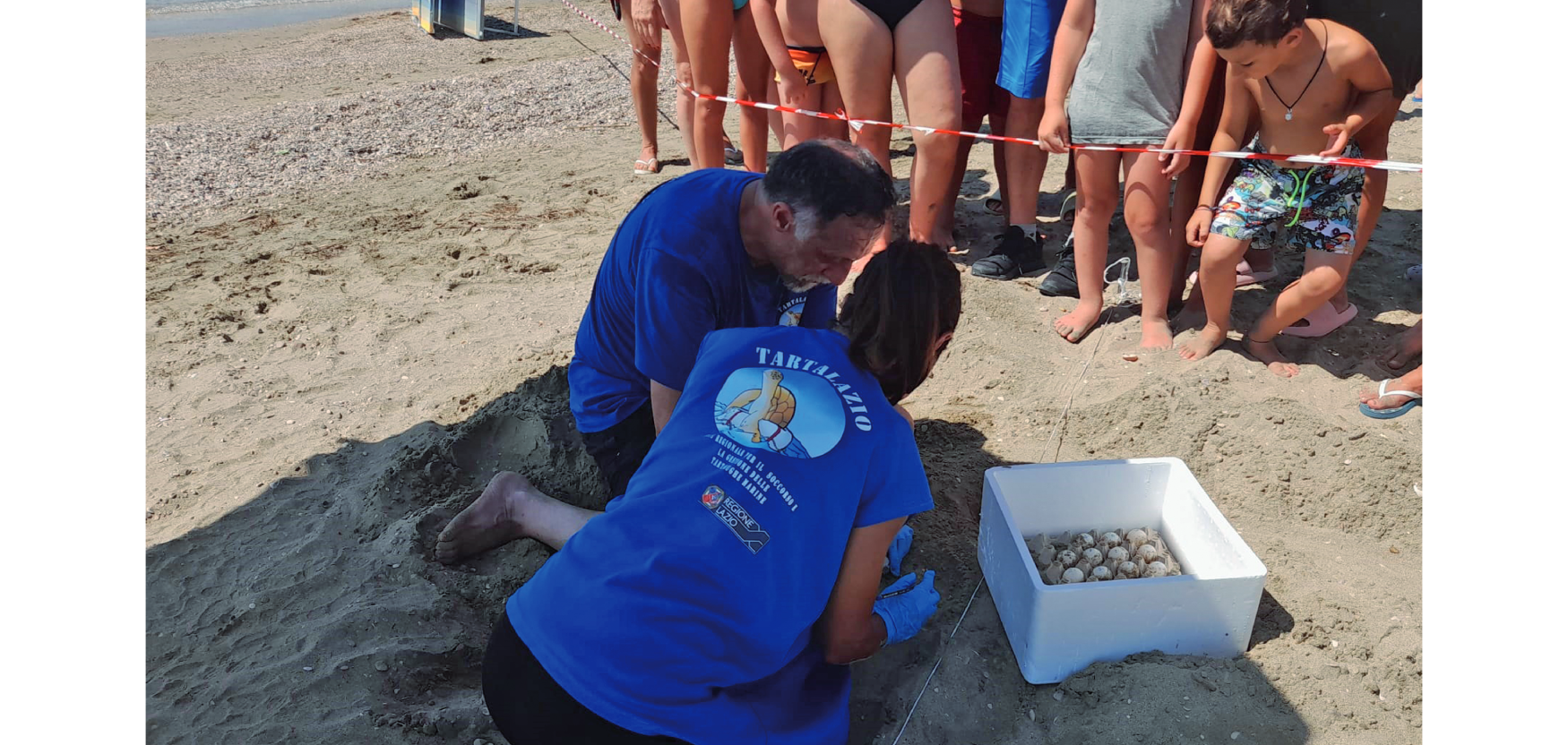
The work of our staff is very important to manage and conserve the natural areas under our responsibility. The park rangers, equipped with the qualification of judicial police, supervise the territory and also have a crucial role in fighting fires, assisting visitors and environmental education of adults and, above all, of the little ones. The technical service provides maintenance of the paths and greenery, to make the places welcoming and safe. It collaborates with other institutions for complex actions, such as the maintenance and enhancement of historical and archaeological structures. The nature service is responsible for safeguarding flora and fauna, through scientific research projects or direct protection initiatives, including the C.R.A.S., a center for the recovery of injured or distressed wildlife. Since 2008 he has set up and conducted the work of the bird ringing station for scientific purposes according to the operational protocols of I.S.P.R.A. For over ten years, it has also carried out a valuable activity for the protection of sea turtles through the TartaLazio regional network which deals with the conservation of adult individuals and nests laid along the beaches of the Lazio region.
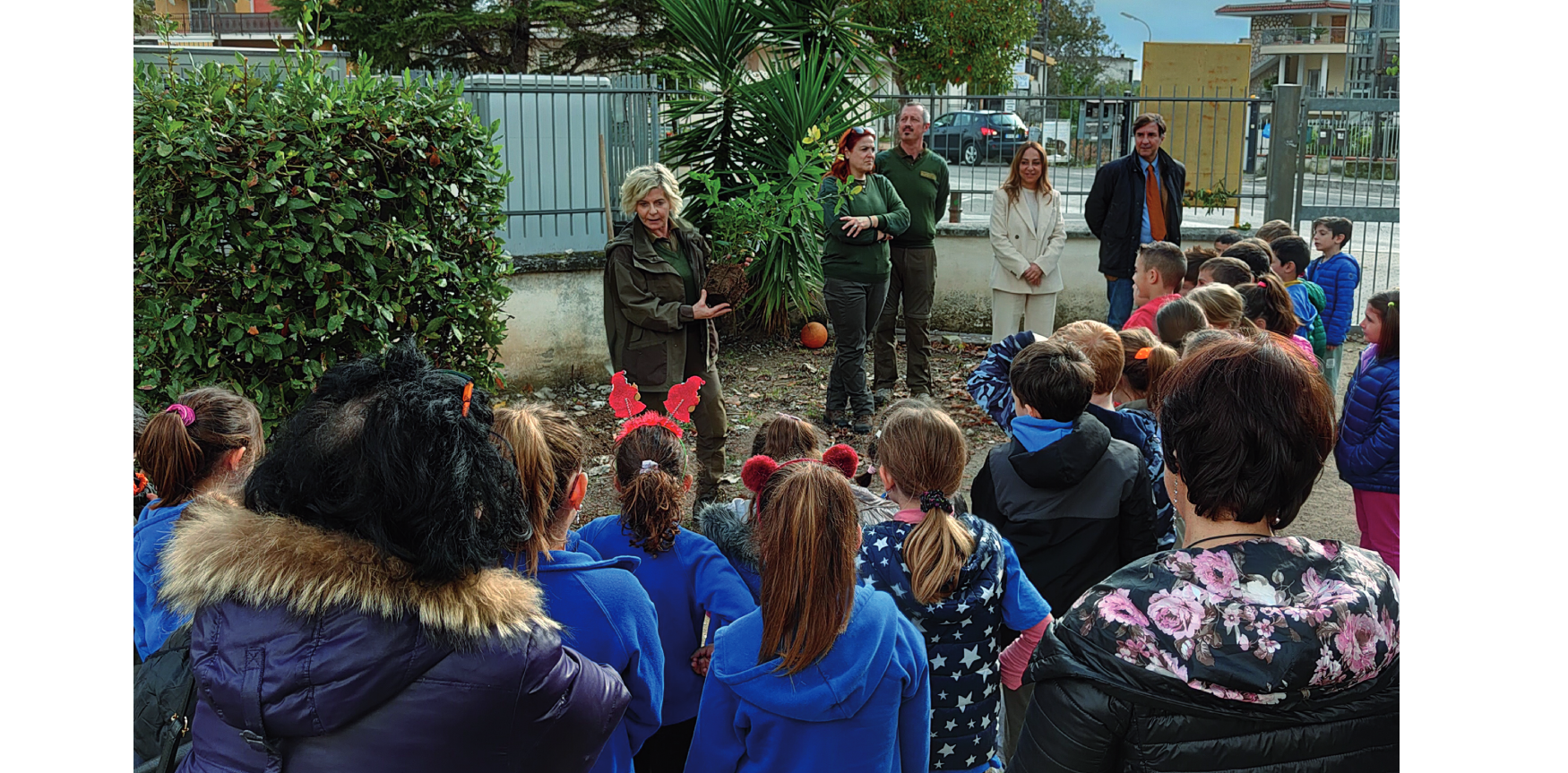
Through the administrative and promotion services, we pursue the important objective of raising awareness among all citizens of the importance of protecting the natural, historical and archaeological heritage of the area in which we live. Collaboration with the Lazio Region autority offers the opportunity to implement effective environmental policies and to organize a wide range of educational activities and events. This includes programs aimed at schools, educational meetings, and guided tours that aim to create a deeper connection between the community and its natural environment. The park also acts as a point of reference for citizens and local associations who wish to propose environmental and/or cultural initiatives. Through its communication channels, mainly digital, it seeks to involve the community in events of naturalistic importance and promotes the importance of environmental conservation. The equipped fitness areas of Monte Orlando in Gaeta, the cork forest of Gianola, the Villa di Tiberio in Sperlonga and the Torre di Scauri offer opportunities to integrate physical well-being and appreciation of nature, making the natural areas a lively and engaging place for visitors of all ages.
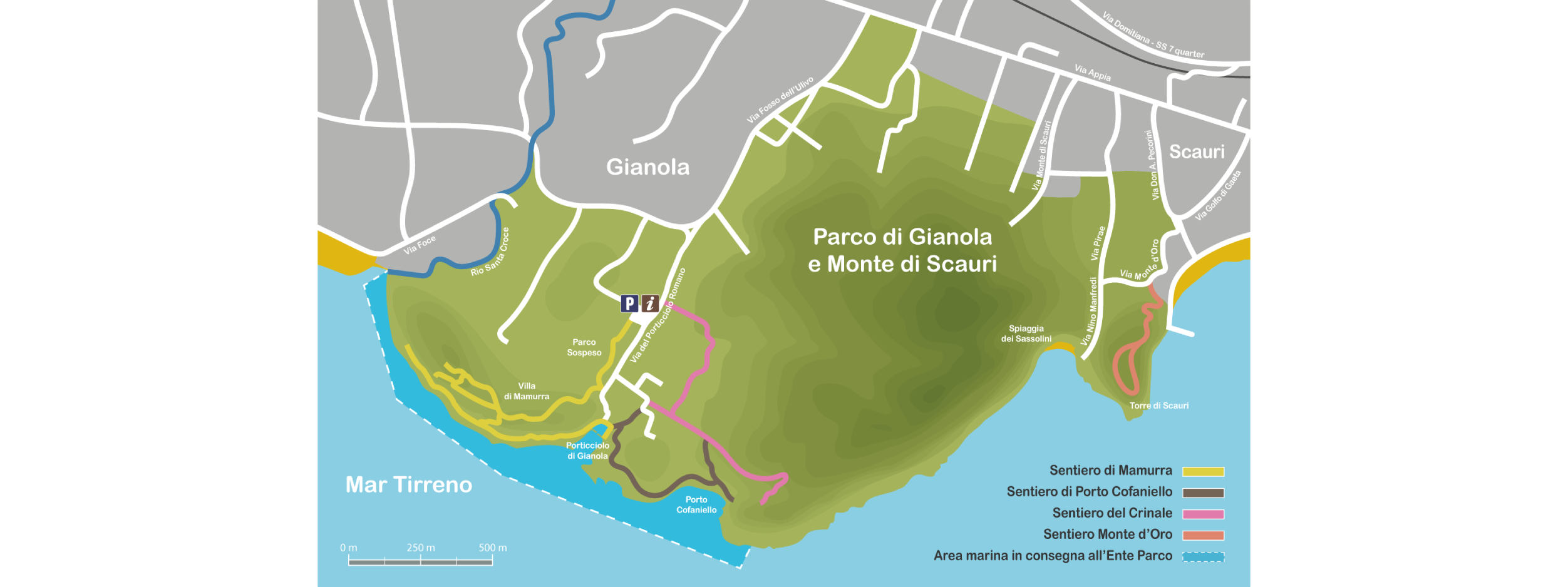
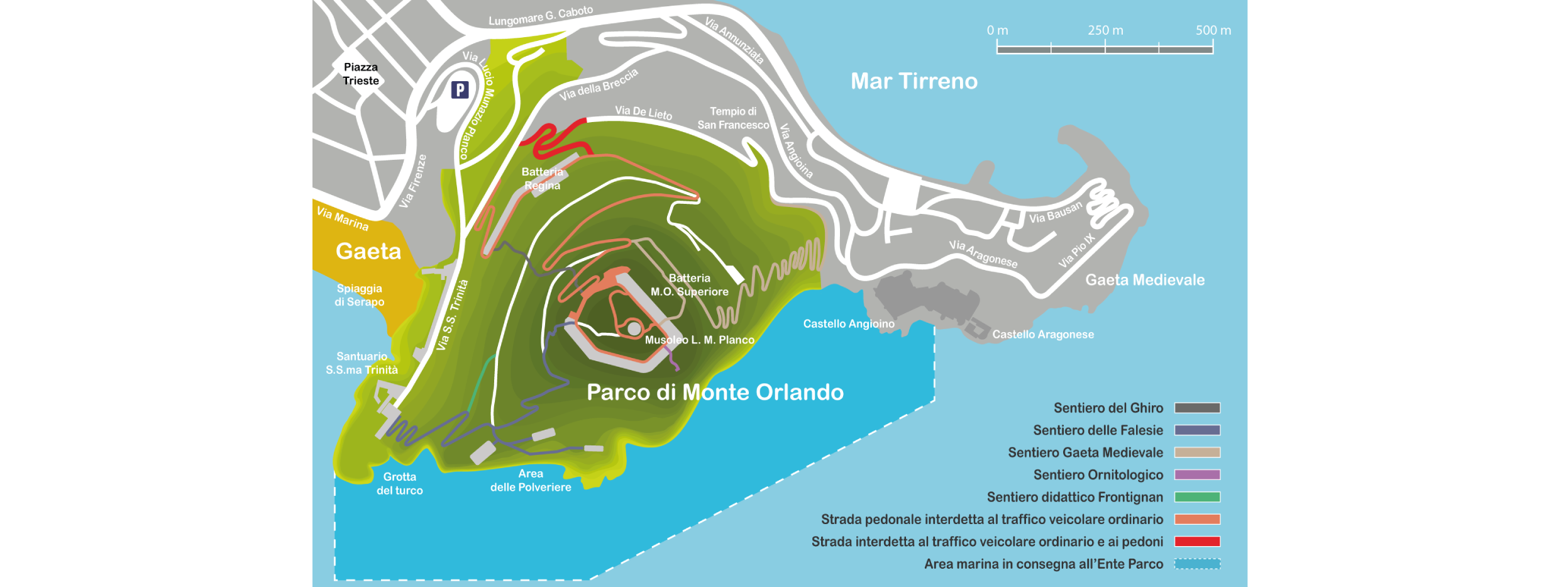
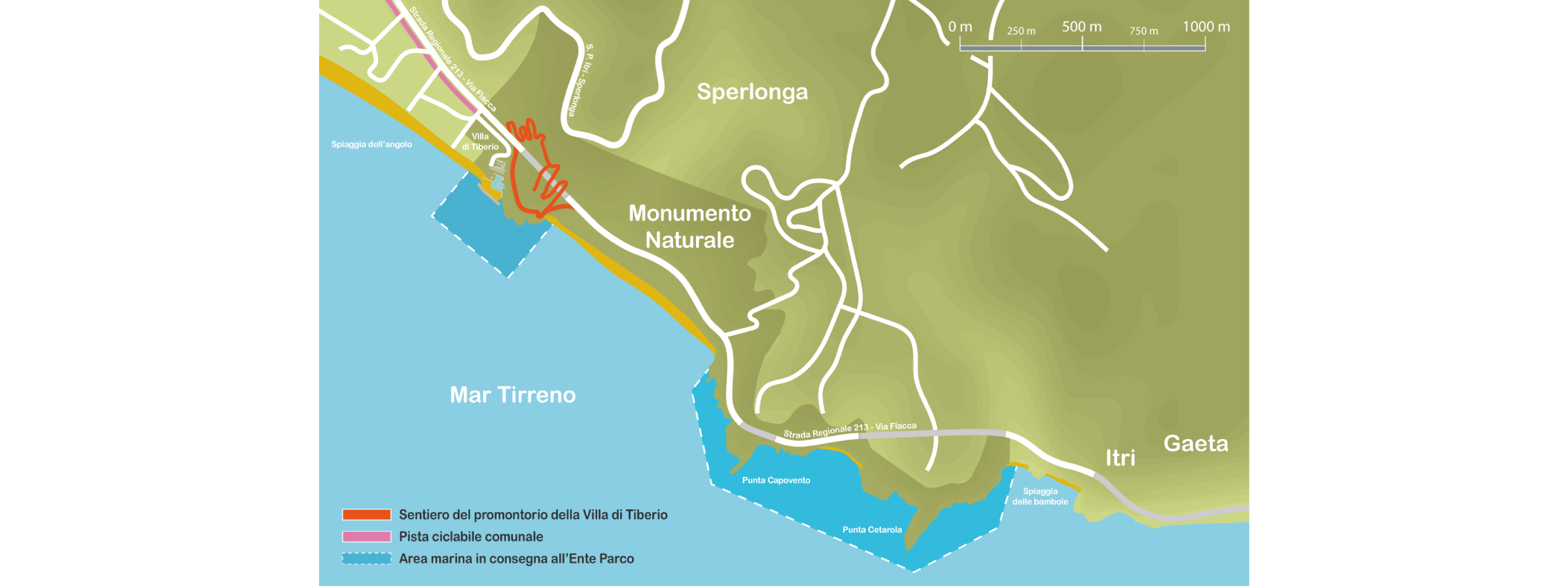
Formia is an important railway and commercial hub in lower Lazio which has around 35.000 inhabitants. About 130 km from Rome and about 90 from Naples, its inhabited center extends over a strip of coast, about 9 km long, which separates the sea from the peaks of the Aurunci mountains. Equipped with a commercial port and a tourist port, it has seen, in recent decades, an increase in population and growing urbanisation. From a tourist point of view, the medieval neighborhood called “Castellone” is very suggestive, where you can admire churches, gates of the ancient city walls and Roman remains, including the well-known “Cisternone”. Not far away are the tomb of Cicerone, a famous orator from the Roman era, located along the route of the Via Appia, the cylindrical tower of the village of Mola and the archaeological museum. The coast of Formia also offers some beaches, among which Vindicio and the peripheral one of Gianola stand out. The hilly boroughs of Maranola, Trivio and Castellonorato, located at the foot of the Aurunci mountains, present a landscape with strong rural accents, in pleasant contrast with the maritime ones of the coastal stretch.
* See the photogallery below
Lively coastal town, it stands on a peninsula jutting out onto the gulf of the same name. A renowned and popular tourist centre, it offers rich historical-archaeological evidence ranging from Roman times to the second half of the 1700s. The medieval district of Sant'Erasmo, a stronghold of the kingdom of Naples and refuge of popes, still shows many artefacts and defensive structures survived to the bombings of the last world war. Here we will find two castles (called "Aragonese" and "Angioino") which, overlooking the sea, dominate the promontory, the spectacular medieval bell tower of the Duomo, among the most beautiful in Lazio, the church of the Annunziata, founded in the fourteenth century, with the famous “Cappella d'oro”, a collection of archaeological finds and the art gallery, where, among other things, the precious banner of the Battle of Lepanto (1571) is exhibited. The other historical centre named “Porto Salvo” is also called "il borgo". Formerly inhabited by fishermen, it is characterized by the regular interweaving of its alleys with the central Indipendenza street. The beaches are appreciated and popular and, starting from the Serapo neighborhood, run for kilometers towards Sperlonga offering landscapes of unquestionable charm.
* See the photogallery below
A town of around 20.000 inhabitants, it is made up of the rural nucleus of Minturno (hence the name of the municipality) and the coastal one of Scauri and Marina. Its economy is based on tourism, trade, small industry, fishing and agriculture. Its ancient origins are testified by the remains of the residences of the Roman patriciate who holidayed here. The ruins of the Roman city of Minturnae are enclosed in an area where the majestic roman theater (1st century AD) stands out. Also here, an original stretch of the Appia vay, the remains of the republican forum, the Capitolium, the imperial forum, the Macellum (market), the Tabernae and the thermal complex are visible. Finally, underneath there is a museum which houses headless statues, sculptures, epigraphs and coins. Other relevant historical artefacts are the Castello Baronale where, among others, Saint Thomas Aquinas, Isabella Colonna and Giulia Gonzaga stayed and the churches of San Pietro (11th-12th century), San Francesco and Annunziata (14th century). Also worth mentioning are the hanging bridge over the Garigliano river, the first built in Italy with iron chain links and the Megalitiche walls (5th-4th century BC). Frequent the beaches that run south towards Naples.
* See the photogallery below
Small coastal village in southern Lazio, located along the Via Flacca in an equidistant position between Rome and Naples, it has just over 3.000 inhabitants. It is perched on a rock spur overlooking the sea characterized by narrow alleys that slope towards the more modern part overlooking the western coast. Its economy is largely based on thriving tourism, which has grown significantly in the last 30 years and fueled by the presence of long and beautiful beaches. Also worth mentioning is the contribution of agriculture and fishing, practiced in the traditional way by a small fleet of boats housed in the city marina (including tourist port). A natural attraction worth mentioning is also the coastal lake of San Puoto. Among the historical testimonies, the villa of the roman emperor Tiberius with the adjoining National Archaeological Museum is very well-known. We also remember ancient coastal watchtowers that were partly destroyed: Torre Maggiore, Torre di Nibbio, Torre Capovento and Torre Cetarola and the notable exception of Torre Truglia, majestic and very well preserved. The church of Sancta Mariae di Spelonche, currently deconsecrated, is used as a conference room.
* See the photogallery below
Fondi has around 40.000 inhabitants and its urban agglomeration rests on the plain of the same name, enclosed by the Aurunci and Ausoni mountains and to the south towards the Tyrrhenian sea. Its economy was, in the past, driven by large-scale agriculture. Today the tertiary sector has reached an important level of development with companies linked to agriculture, trade and logistics, among which MOF stands out, one of the most important fruit and vegetable markets in Europe. Tourism linked to the history and beaches of the coast is also important. The historic center houses monuments from the pre-Roman, Roman and medieval periods and a good number of religious buildings including the cathedral of San Pietro (12th century), the collegiate church of Santa Maria Assunta and the sanctuary of the Madonna del Cielo (end of the 14th century) and the characteristic church of the Madonna del Soccorso. The church of San Domenico, the church of San Francesco and the convent, built in 1363, are also worth a look. In the main square there is the baronial castle of Caetani, a symbolic monument built between the 13th and 15th centuries, majestic and visitable because well preserved. Also worth seeing is the Jewish neighborhood called "La Giudea", due to the Jewish community that has resided there for centuries.
* See the photogallery below
Itri is a town in lower Lazio with around 10.000 inhabitants whose territory extends immediately inland in a valley on the western side of the Aurunci mountains. Agriculture is the main economic activity and is centered on the production of olives. Although there are traces of people frequenting the site already in prehistoric times, the first news of a town called Itri dates back to 914. The first historical turning point was the Roman conquest which made the Appia way pass through here. “Fra' Diavolo” (Michele Pezza) was born in Itri in 1771. He was first a brigand and then a Bourbon colonel of Ferdinand IV. His personality has inspired literary, theater and cinema works. In recent years, the tourist flow has increased thanks to the naturalistic peculiarities and some historical artefacts among which it is worth mentioning the convent of San Francesco (1324), the monastery of San Martino, the church of San Michele Arcangelo (11th century), that of Santa Maria di Loreto, the church of Santa Maria Maggiore. The most popular attractions are, in any case, the majestic medieval castle and the famous sanctuary of the Madonna della Civita, a destination for almost half a million pilgrims who reach it on foot every year.
* See the photogallery below
The paths and routes of the natural areas of the Riviera di Ulisse regional park are generally of medium/easy level and suitable for everyone. Some environments may be affected by restrictive ordinances issued by the park authority or by the competent municipalities. All users are therefore invited to pay maximum attention to signs and warnings. We recommend clothing and accessories suitable for any general nature excursion. There is a very limited number of waste bins in the areas. They should absolutely not be intended as containers in which to throw large objects, such as pizza boxes, bottles, bags full of rubbish, etc... Waste collection and disposal are very problematic and we therefore invite all visitors, with a gesture of good will, to bring them back, disposing of them correctly elsewhere. The natural areas can be visited and used in the time slot from dawn to dusk and we would like to remind you that some simple but important rules of conduct apply within them:
Do not throw waste into the environment
Keep dogs on a leash and pick up their waste
Do not light fires
Do not collect plant species
Don't abandon the marked paths
Do not camp or bivouac
It is possible to keep up to date on initiatives, activities, events and news on the park's website or via its social channels.